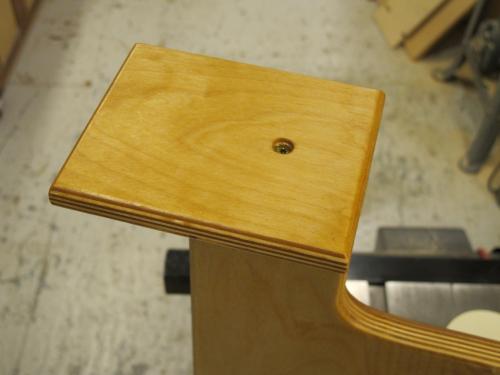This will be a description of a method of construction for a sturdy boat stand that will knock down to almost flat. This is the fourth iteration, which combines ease of construction with good storage properties and a sturdy finished stand. There is no reason something similar couldn't be used to build sawhorses or other supports.

The basic assembly starts with 3/4" nominal baltic birch plywood. A doubled up piece forms the foot, which is the key component. The foot and the stand support is made of this material. The slip together joint is made in the foot. I used the table saw and 10" blade to cut the notch in the top, then cleaned it up with a chisel. The side notches were made to match with a 3/8" box joint set, again on the table saw. There is no reason that a dado head couldn't be used for this joinery.

The notch in the stand support was made with the table saw and fitted as closely as possible to the thickness of the plywood, which is roughly 11/16". 1/32" is plenty of clearance. A word of warning here: The maximum cut of the 10" blade is about 3", so I sized the notch and the key in the foot for that dimension. They need to match. Once those joints are made, they can be replicated as many times as required.
The stand for the transom looks like this:

The wide notch in this support is because it is used for a flat bottomed boat with two skegs. Normally the support would look like this:

A cutout for a single skeg leaves more room for the support pads, which are the final piece. This stand was generation 3, where I used a glue and screw method for the twin feet. These are harder to store as they don't knock down.
The final piece are the pads, which glue and screw to the top of the stand support. Use a large enough pad to give good support to the boat being displayed. These were made of 1/2" baltic birch because I had it around.

Titebond was used to glue the support in place along with a single screw. These pads are about 4" X 5". The stands were finished with oil to protect them from moisture.